Film noir is one of the most recognizable and influential genres in the history of the medium. Noir is French for “black”, and as such, it’s a word that perfectly captures the style, ambiance, and mood of the genre; film noirs feature morally bankrupt or conflicted characters navigating crime-ridden worlds that are generally devoid of any heroes. The stories of these films are cynical, and low-key lighting, sharp contrast between lights and shadows, and unconventional camera placement characterize the cinematography.
The classical period of film noir took place in the 1940s and 1950s. For the purpose of this article, only films from this era will be included. From classic noir films like Billy Wilder’s Double Indemnity, to John Huston’s genre-defining Maltese Falcon, this list explores the most entertaining noir films in the legendary history of the genre.
10
‘The Sweet Smell of Success’ (1957)
Directed by Alexander Mackendrick
Alexander Mackendrick’s classic film noir, The Sweet Smell of Success tells the story of shameless journalist, J.J. Hunsecker (Burt Lancaster) who uses his power and influence to sabotage a relationship between his younger sister (Susan Harrison) and a jazz musician (Martin Milner). The Sweet Smell of Success features a legendary and subversive collaboration between actors Tony Curtis and Lancaster, who had experienced enormous success following their collaboration on Trapeze.
The Sweet Smell of Success is a film that’s known for its strikingly sharp dialogue and memorable performances. Curtis, who had been popular for portraying nice-guys in his films, gave a uniquely riveting performance as the sleazy Sidney Falco, an amoral press agent who carries out J.J.’s bidding, and Lancaster gives a phenomenal performance as the cold and controlling J.J. who stops at nothing to ruin his sister’s relationship. The Sweet Smell of Success was initially reviled by critics who didn’t appreciate the stark contrast between Curtis and Lancaster’s previous roles and the new shady characters they portrayed, and the dialogue-heavy script was also a point of frustration for many viewers. Despite this initial setback, The Sweet Smell of Success is now widely considered one of the greatest film noirs of all time, precisely for the same reasons audiences disliked it in the first place. It’s sharply writen script and detestable characters make it one of the most compelling films of the genre.
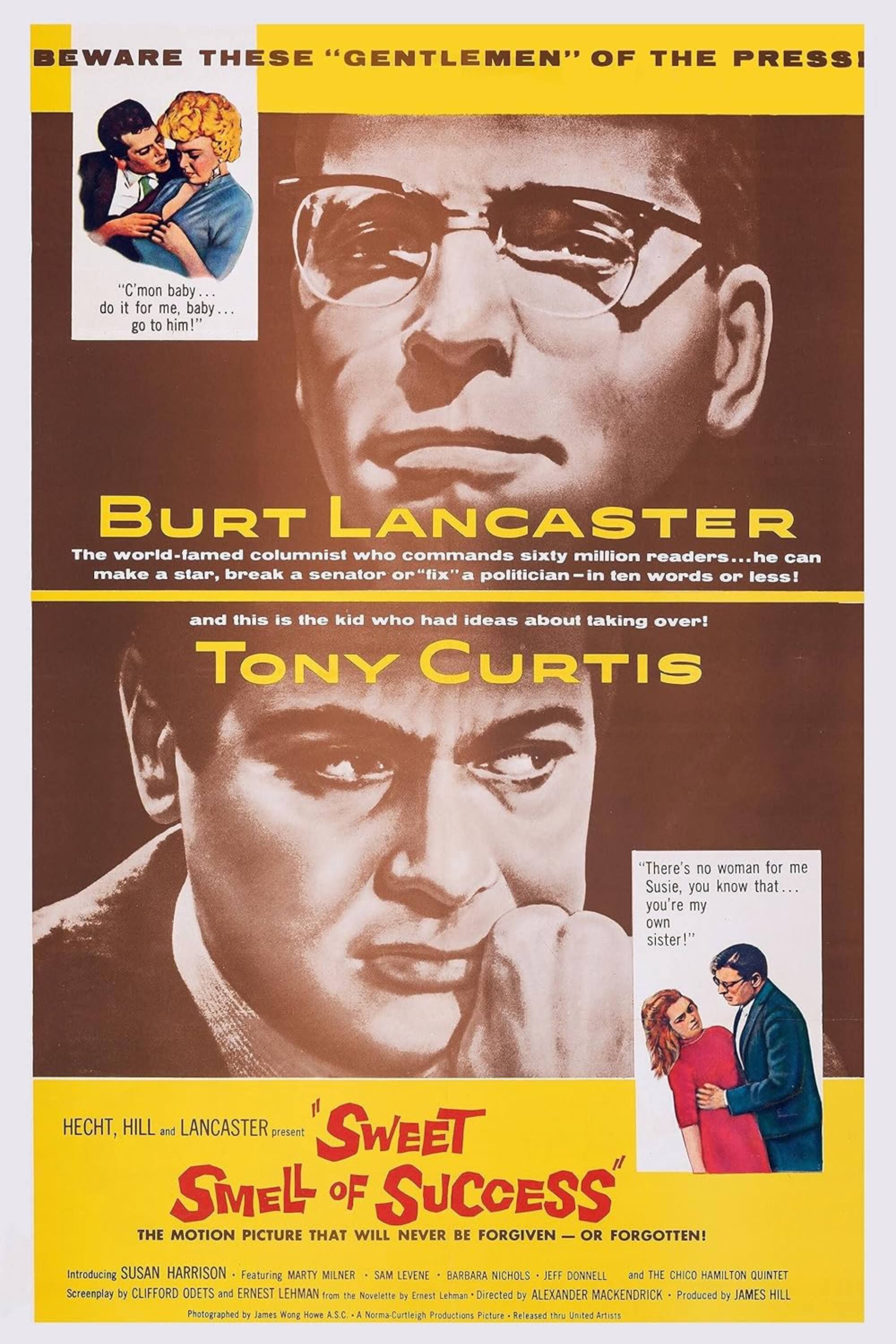
Sweet Smell of Success
- Release Date
-
July 4, 1957
- Runtime
-
96 Minutes
-

Burt Lancaster
J.J. Hunsecker
-

-

Susan Harrison
Susan Hunsecker
-

Martin Milner
Steve Dallas
9
‘The Maltese Falcon’ (1941)
Directed by John Huston
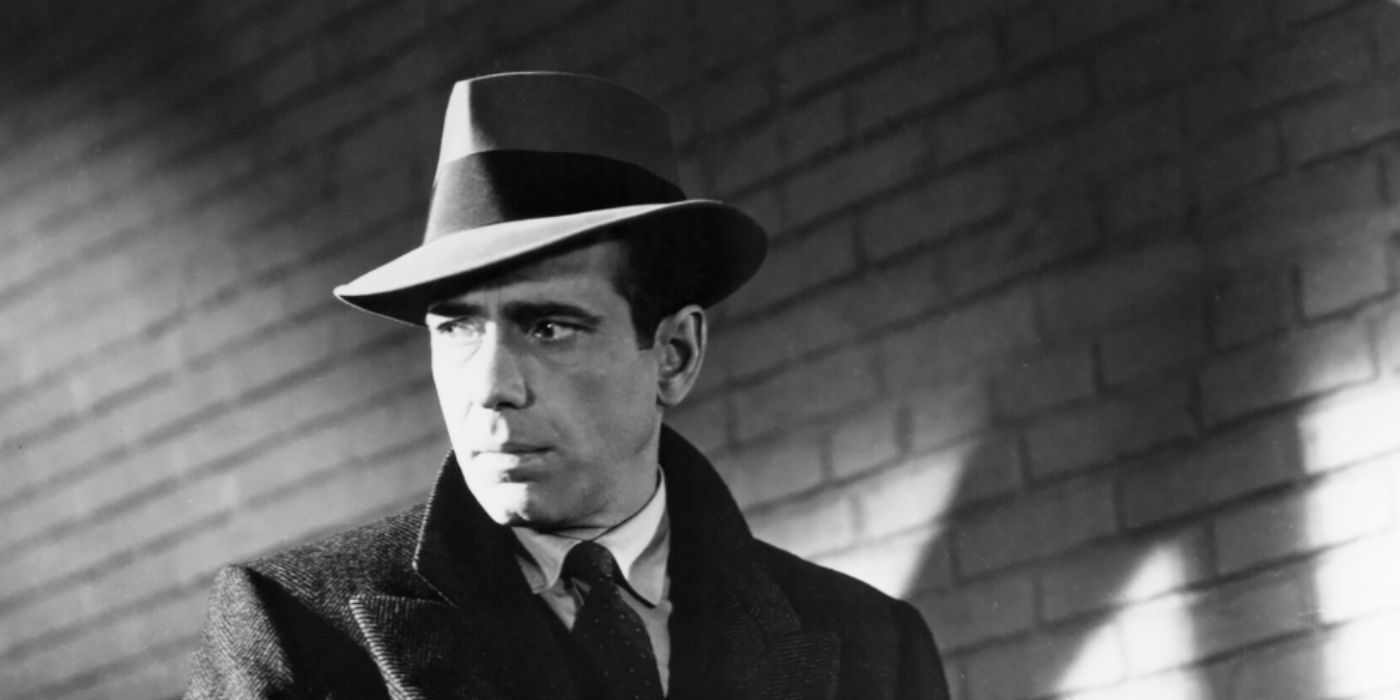
Huston adapted Dashiell Hammett’s novel, The Maltese Falcon for his directorial debut. This classic film noir tells the story of private investigator Sam Spade (Humphrey Bogart), who finds himself embroiled in a complicated web of crime and deceit when he accepts a case brought to him by a mysterious woman (Mary Astor). The situation is immediately complicated when Sam’s partner is murdered and Sam is confronted by a man who demands that he find a coveted historical artifact known as the Maltese Falcon.
The Maltese Falcon marked a pivotal moment in both Huston and Bogart’s careers; for the former, the directorial debut was a stunning display of his talent and promise as an up-and-coming filmmaker and screenwriter, and for the latter it remains one of their most iconic and influential roles. Huston’s directs his sharply written screenplay with stunning precision, carefully building a sense of growing suspense with arresting frames and low-key lighting. Bogart delivers one of his all-time best performances as the brooding Sam Spade, a sharp, no-nonsense investigator whose tough exterior scarcely conceals his weary cynicism. This performance wrote the blueprint for the detective archetype that would become a prominent fixture of film noir. The sharp writing and direction of the film along with Bogart’s iconic performance come together for one of the best detective stories ever told on the big screen.
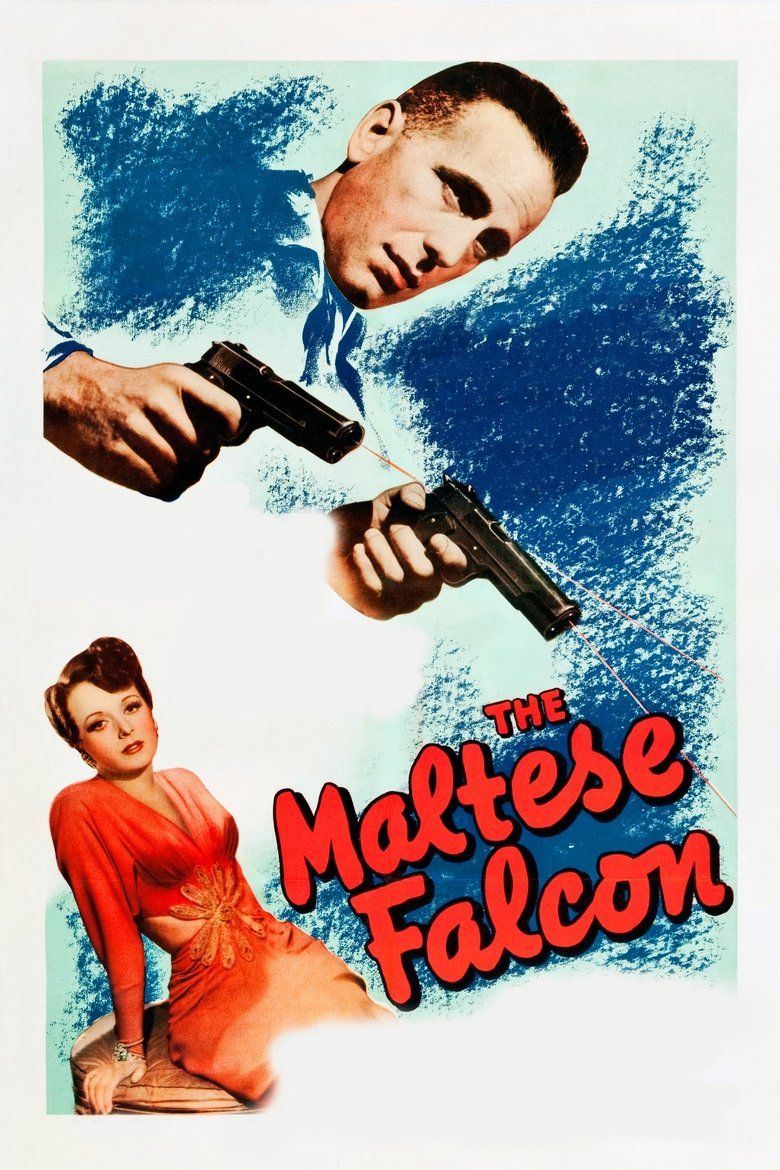
The Maltese Falcon
- Release Date
-
October 18, 1941
- Runtime
-
100 minutes
-

Humphrey Bogart
Samuel Spade
-

Mary Astor
Brigid O’Shaughnessy
8
‘Laura’ (1944)
Directed by Otto Preminger
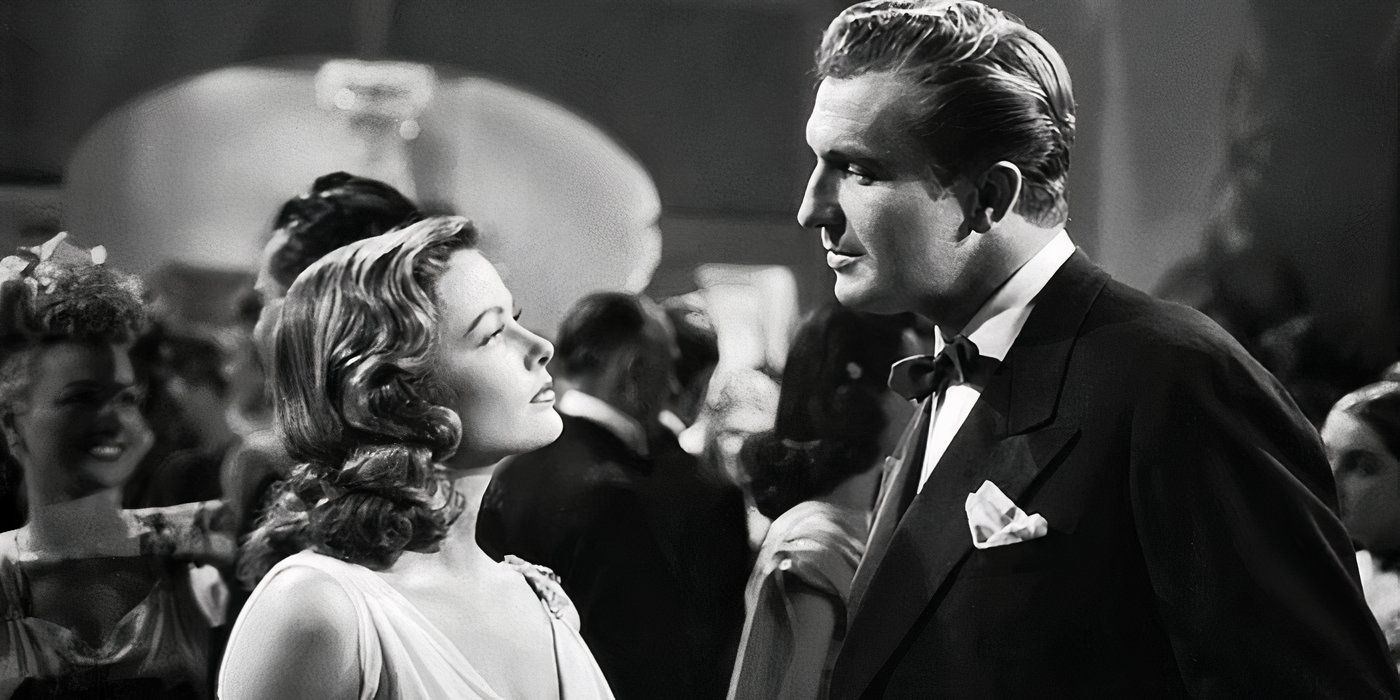
Otto Preminger’s Laura, is a 1944 film noir that follows the story of a detective who falls in love with a dead woman while investigating her murder. When advertising executive Laura Hunt (Gene Tierney) is killed by an unknown assailant, detective Mark McPherson (Dana Andrews) is assigned to the case and soon suspects that her mentor, powerful newspaper columnist Waldo Lyedecker (Clifton Webb) may be involved.
Preminger is without a doubt one of the greatest directors of all time, and Laura remains one of his most impressive achievements. Preminger was initially forced to co-direct the film with Rouben Mamoulian at the direction of studio head Darryl F. Zanuck, who wanted to get back to Preminger after having issues with him on a previous project. However, Preminger’s vision for the film was so crystallized and definitive, that Zanuck ultimately conceded full control of the film to Preminger. Preminger would go on to make one of the greatest film noir’s in history; Laura features razor-sharp dialogue, a compelling cast, and a suspenseful story that reels audiences in with every passing scene. Webb gives an unforgettable performance as the arrogant and scorned Waldo Lydecker, and Andrews does a phenomenal job as the brooding detective. Laura is a phenomenally well-paced story that keeps audiences in a state of suspense from beginning to end.
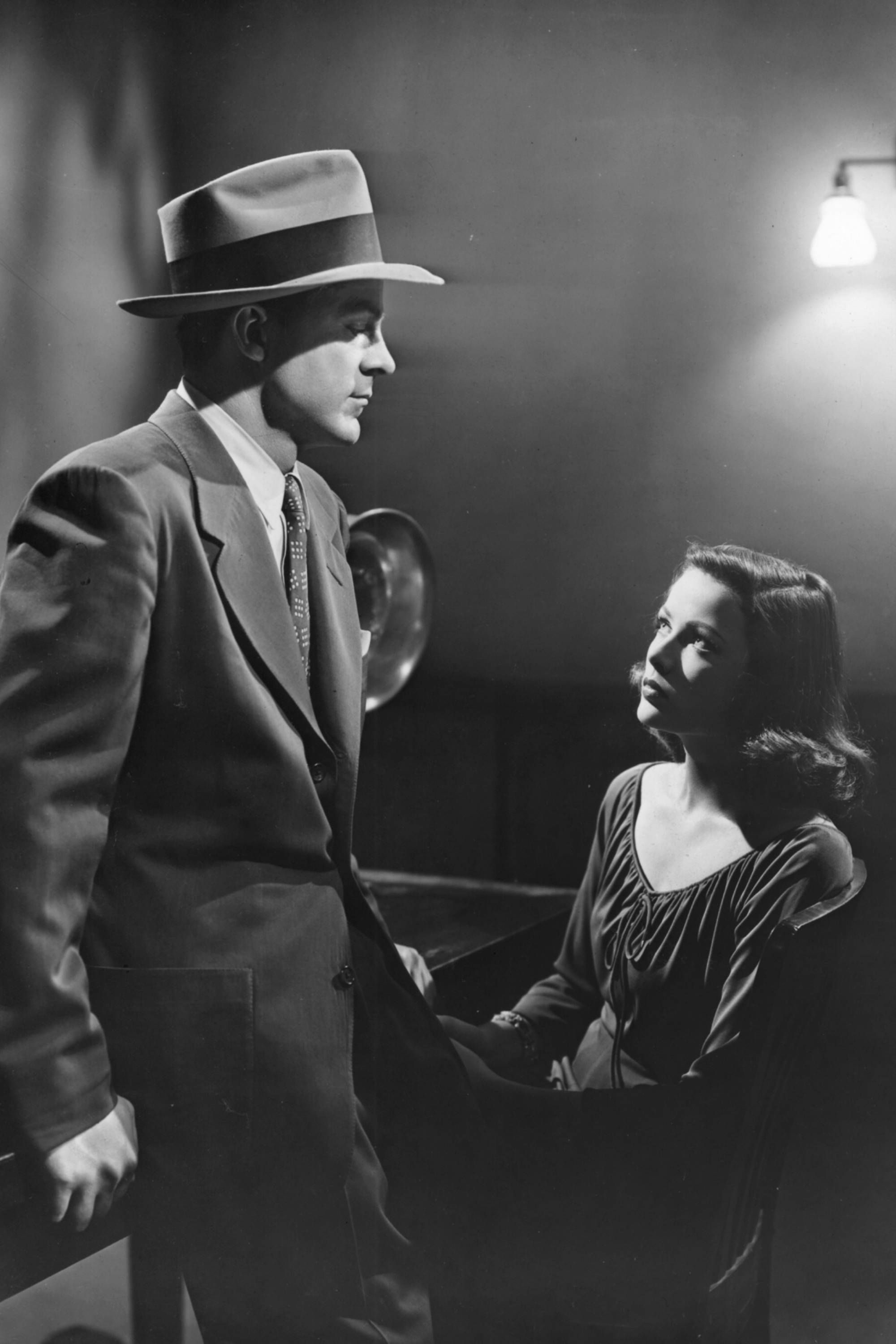
Laura
- Release Date
-
October 11, 1944
- Runtime
-
88 Minutes
-

-

Dana Andrews
Det. Lt. Mark McPherson
7
‘The Big Sleep’ (1946)
Directed by Howard Hawks
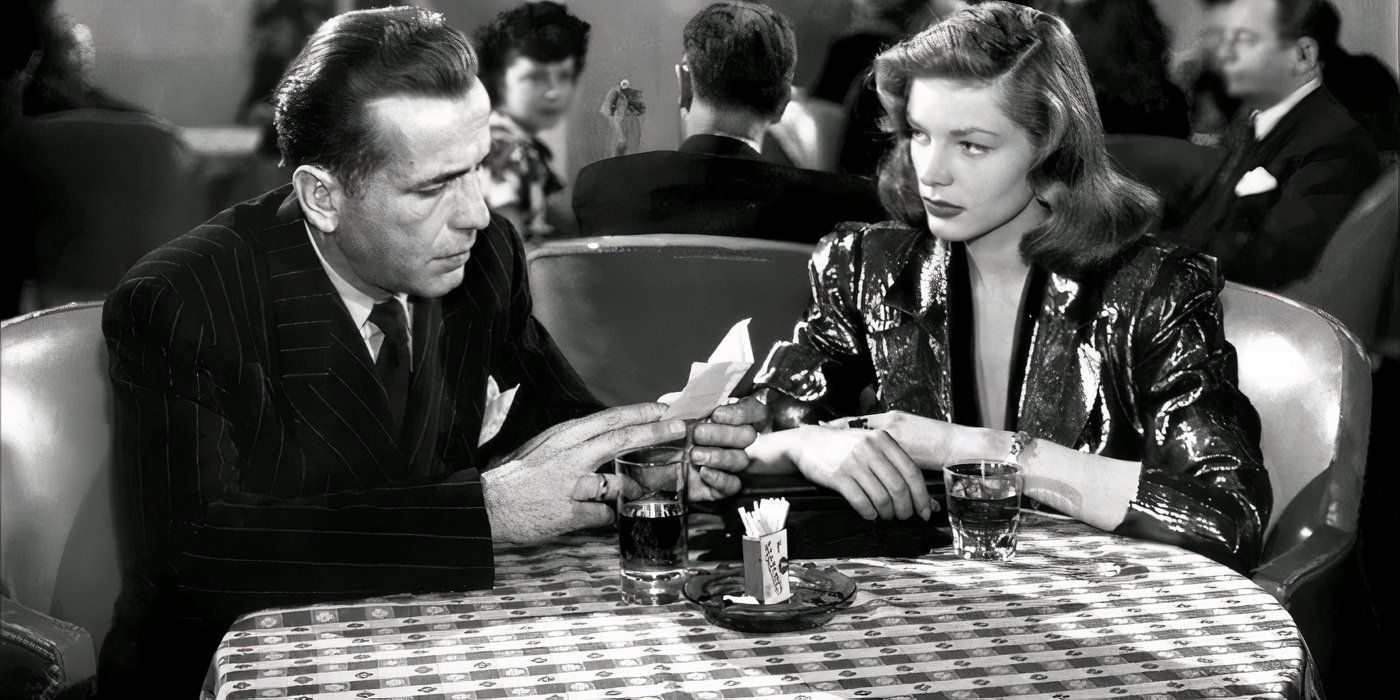
Howard Hawk’s classic, The Big Sleep, stars Bogart and Lauren Bacall in an adaption of one of Chandler’s most popular books and the second of a highly successful series of film collaborations between Bogart and Bacall. Bogart plays Philip Marlowe, a detective hired by General Sternwood (Charles Waldron) to help settle the gambling debts of his young daughter Carmen (Marth Vickers). The general’s older daughter, Vivian (Lauren Bacall) who assists Marlowe on the job, suspects there’s more to the story, and as Marlowe delves deeper, he encounters murders and blackmail in an increasingly complex case.
The Big Sleep is one of Bogart’s greatest film performances, and his onscreen chemistry with Bacall, whom he had recently married after meeting each other on the set of To Have and Have Not, is undeniable. Shot only four years after his landmark role in The Maltese Falcon, Bogart once again plays the role of a wise, charismatic, but brooding, detective who works a case that reveals a web of depravity and indecency. Hawks’ direction is superb, as he weaves a story that’s thoroughly captivating and consistently unpredictable. The dialogue is impressively witty (as all classic noirs should be) and is flawlessly delivered by a cast of top-tier actors. Writers Leigh Brackett and William Faulkner worked together to produce the initial drafts of the screenplay, which would be further revised by Jules Furthman and Hawks to appease censorship from the Hays Office.
6
‘Touch of Evil’ (1958)
Directed by Orson Welles
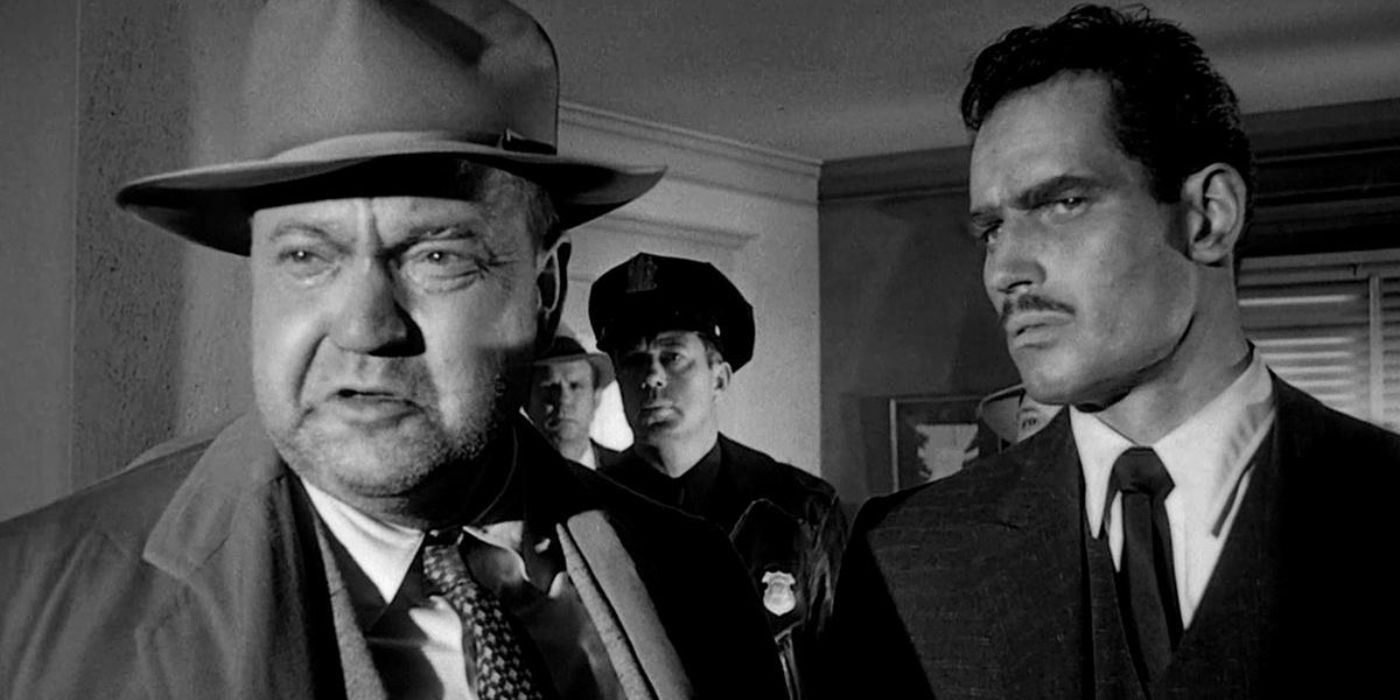
Orson Welles’ Touch of Evil is a film noir based on Whit Masterson’s novel, Badge of Evil. After a car bomb detonates on the U.S. side of the U.S./Mexico border, Mexican drug enforcement agent Miguel Vargas (played by Charles Heston, who dons a not-so-subtle brownface) is sent to investigate the incident alongside American police captain Hank Quinlan (played by towering Welles). While investigating the crime, Vargas begins to suspect that Quinlan and his partner are attempting to frame an innocent man.
It’s important to watch older films like Touch of Evil with respect to the context in which they were released. With that said, Heston’s brownface is absolutely outrageous and impossible to ignore by today’s standards. Despite this, (or perhaps by virtue of it) Touch of Evil is an incredibly entertaining and engaging film noir, and a necessary inclusion on this list. The opening one-take that follows the soon-to-be victims of a car-bombing is one of the most stunningly impressive displays of cinematography in history. Russell Metty’s camera work is striking as it effortlessly maintains the viewers’ attention with a commanding fluidity and focus. Though the opening shot is often cited, the investigation scene is also shot to perfection. From the moment this film starts, audiences are guaranteed to be hooked. Heston gives a strong performance as Vargas, and Welles fills every scene he’s in with his gargantuan frame and menacing glare. He’s a perfect villain, and this performance remains one of his most memorable achievements.
5
‘The Third Man’ (1949)
Directed by Orson Welles
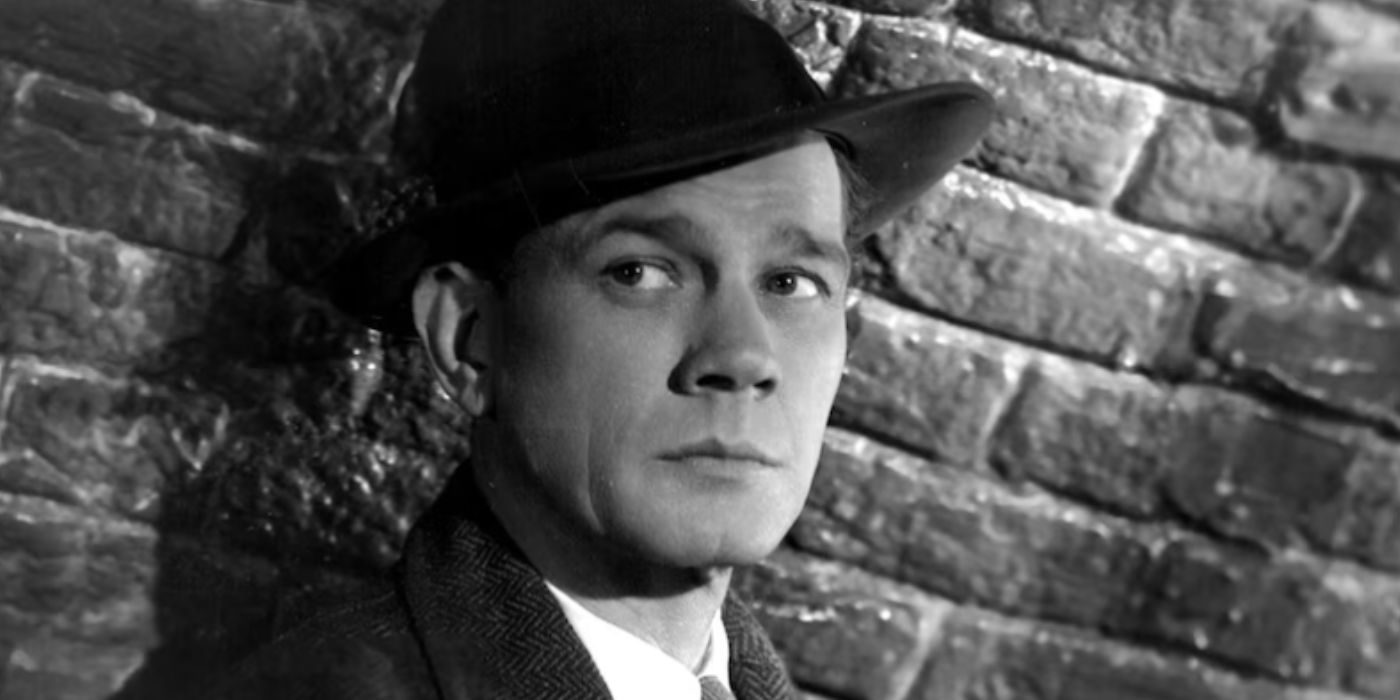
Carol Reed’s The Third Man features Joseph Cotten as American Writer, Holly Martins, who arrives in the post-World War II Allied-occupied Vienna to accept a job with his friend Harry Lime (Welles). Upon arriving, Martins discovers that Lime has died and decides to stay in the city and investigate his death, falling for Lime’s girlfriend Anna Schmidt (Aida Valli) along the way.
The Third Man is a thrilling noir with an engrossing mystery and memorable performances from an ensemble cast. It’s widely considered one of the greatest films of all time, and with good reason. The Third Man features visually arresting cinematography by Robert Krasker inspired by German expressionism. The film’s use of Dutch angles and harsh lighting are brilliantly contrasted against Vienna’s beautiful architecture while also building a sense of discomfort and tension that continues to expand as the film progresses. Shots of Vienna’s convoluted sewer feature jarring lighting that’s as beautiful to look at as it is ominous. Welles gives a top-tier performance as Lime, and his “Cuckoo Clock” speech is easily one of the best in the history of cinema.
4
‘In a Lonely Place’ (1950)
Directed by Nicholas Ray
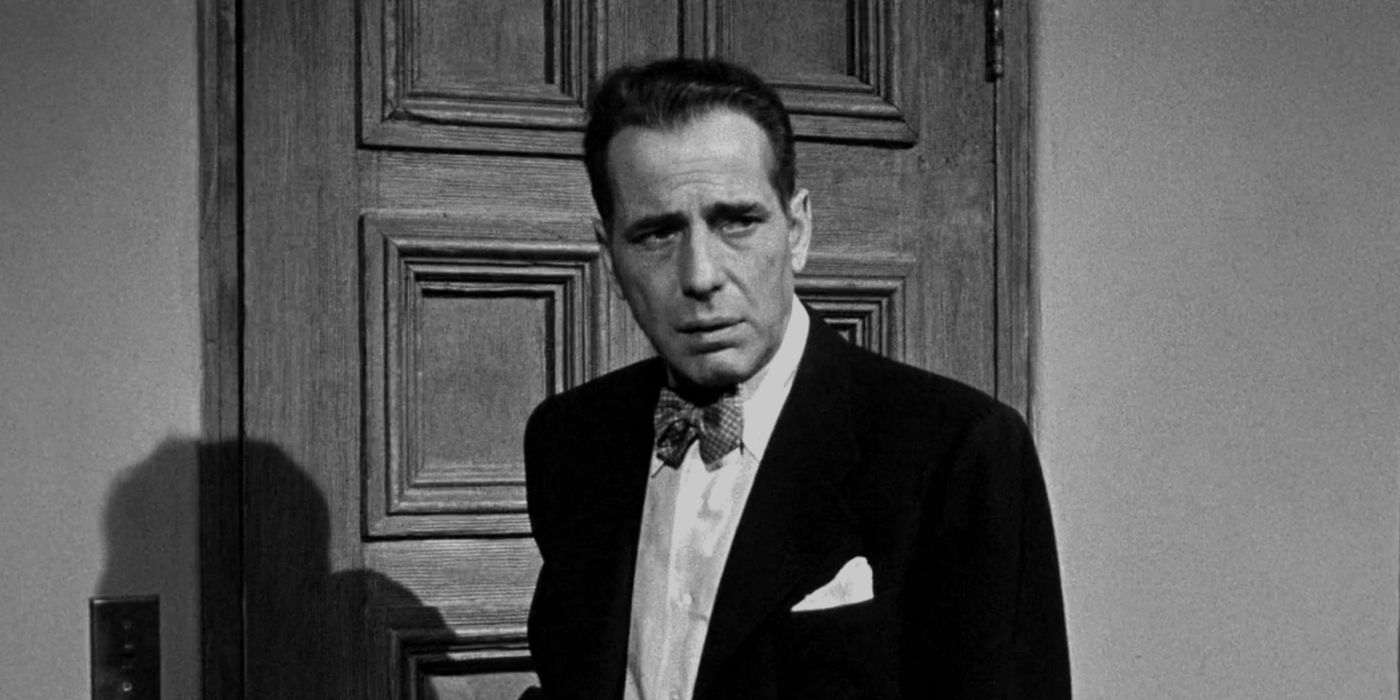
In Nicholas Ray’s classic film noir, In a Lonely Place, Bogart stars as Dixon Steele, a struggling Hollywood screenwriter with a mean streak and a proclivity for temper tantrums. While getting to know his neighbor, Laurel Gray (Gloria Grahame) Dixon is investigated for the murder of a woman he met once. As the investigation deepens, so does Dixon and Laurel’s relationship, but Dixon’s implacable rage threatens their union.
In a Lonely Place is often cited as Bogart’s best work, despite it being one of his lesser-known performances. Bogart plays his role with searing authenticity, making his screen presence an undeniable force. Louise Brooks asserted in her essay “Humphrey and Bogy” that Dixon Steele was the closest any character had been to the real Bogart. His anger, penchant for alcohol, loneliness, alienation, and stubborn pride in his art were as close to the real-life actor as any of his roles had ever been. The heartbreaking story and realism of In a Lonely Place make it a much more poignant and impactful film than other noirs that typically gravitate toward melodrama. The film’s original ending depicted Dixon strangling Laurel to death amid a violent fury, only to be cleared of the original murder he was being investigated for and hauled away by police. Ultimately, this ending was scrapped in favor of the more realistic ending of Dixon and Laurel mutually realizing their love affair was unsalvagable and the broken Dixon walking back to his apartment alone and defeated. This ending would prove to be one of the greatest of any film noir ever.
3
‘Double Indemnity’ (1944)
Directed by Billy Wilder
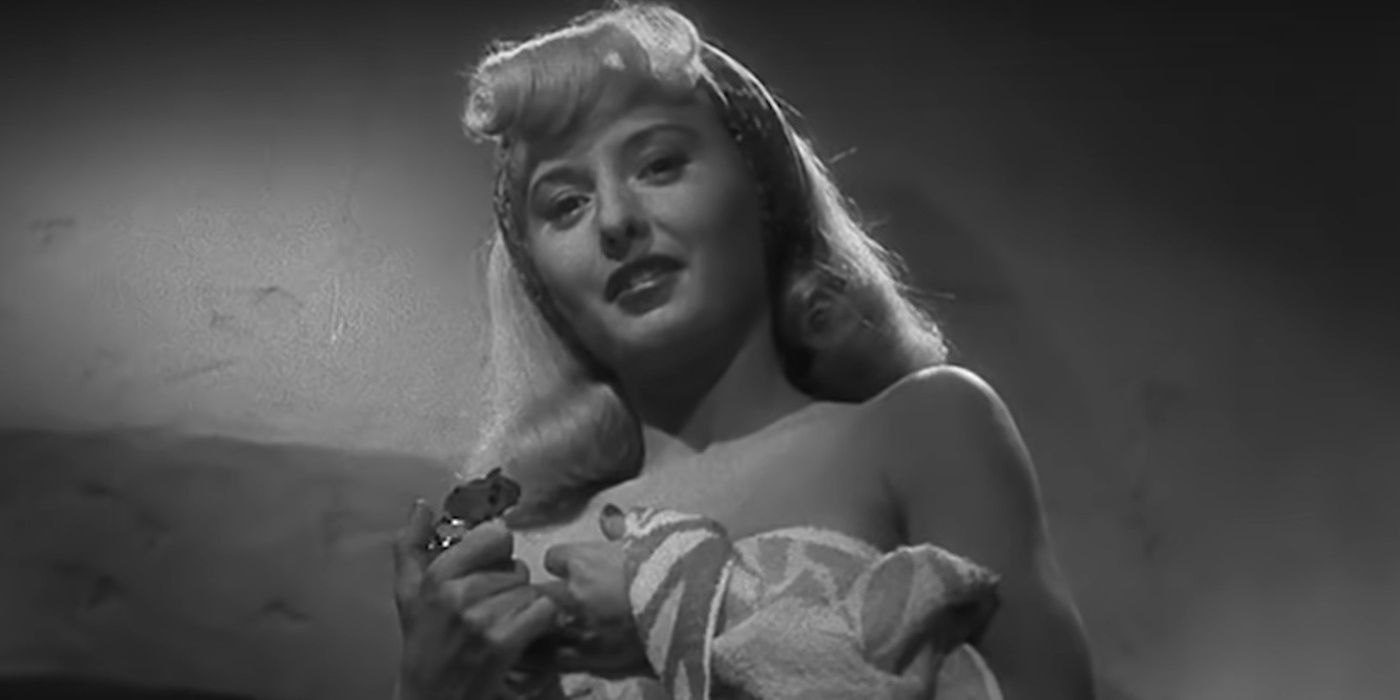
In Wilder’s classic film noir, insurance salesman Walter Neff (Fred MacMurray) finds himself entrenched in a murder scheme after falling for the seductive Phyllis Dietrichson (Barbara Stanwyck). Dietrichson convinces Neff to help murder her husband and make it look like an accident so that she can live off the insurance claim, but when Mr. Dietrichson’s daughter Lola (Jena Heather) pushes insurance investigator Barton Keyes (Edward G. Robinson) to look into the case, and their nefarious conspiracy begins to come to light.
Double Indemnity is a brilliantly written crime film masterpiece that keeps audiences hooked from beginning to end. The screenplay was adapted from the Raymond Chandler novel of the same name by Wilder and Chandler himself, and features some of the punchiest dialogue in film history. During Walter and Phyllis’s initial meeting, the two engage in one of the most thrilling back-and-forths ever captured on film. The sizzling chemistry between the two leads is palpable as the two flirt in a brilliantly blocked scene. The camera movement seamlessly glides through the scene, scarcely drawing attention to the shifting power dynamics between the two characters. Both Stanwyck and Murray gave phenomenal performances in Double Indemnity, with MAcMurray playing against type (at this point in his career he was known for playing “happy-go-lucky good guys”). Visually speaking, Double Indemnity is also a stunning film; its use of lighting through Venetian blinds to convey the appearance of prison bars and the contrast between the brightly lit exterior of Phyllis’s California exterior and its dark, repressive interior gestures towards the film’s thematic depth.
2
‘Strangers on a Train’ (1944)
Directed by Alfred Hitchcock
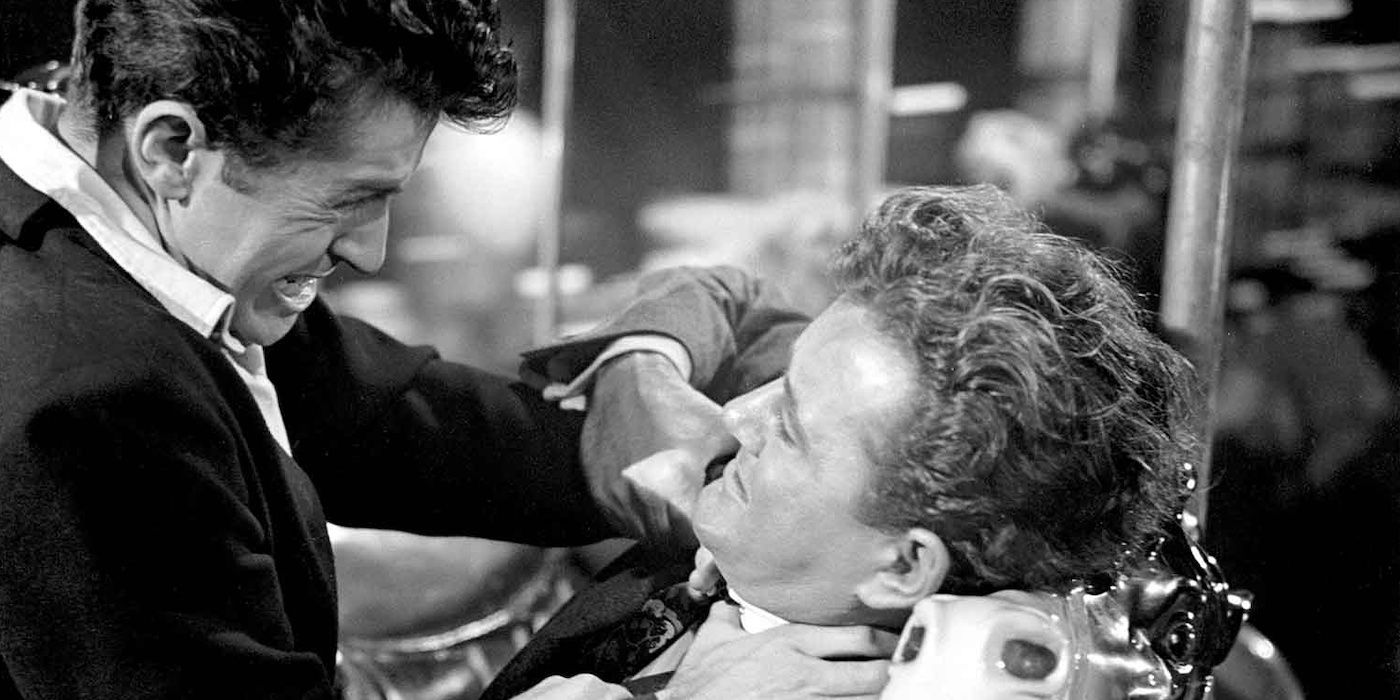
Alfred Hitchcock’s masterpiece, Strangers on a Train, is an adaptation of Patricia Highsmith’s debut novel of the same name. It follows the story of amateur tennis star Guy Haines (Farley Granger), who wants to divorce his promiscuous wife to be with the woman he loves, Anne Morton (Ruth Roman), the daughter of a US senator. Guy meets Bruno Anthony (Robert Walker) on a train, and after a conversation, Bruno offers Guy a deal; Bruno will kill his wife if Guy kills Bruno’s father, opining that the murders would be untraceable to the two men who have no ostensible connection to one another. Guy exits the train and laughs off the plan, without shooting down the idea. Leaving, Guy forgets his lighter, which has his engraved initials on it. Picking it up, Bruno decides to follow through on the proposition, setting forth the events of one of the most thrilling film noirs of all time.
Hitchock isn’t called the master of suspense for nothing. Strangers on a Train is a heart-pounding adaptation of Highsmith’s novel that builds tension with every passing moment. From the initial conversation between Guy and Bruno, there’s a tense atmosphere of discomfort between the two, who are cast as polar opposites to each other; the contrast between Bruno’s childlike hedonism and his cavalier perspective on murder and Guy’s conservative, by-the-book demeanor is piercing, and Strangers on a Train only continues to build on this as the story unfolds. Deliberate choices in cinematography emphasize the differences between the characters; Guy’s bright tennis uniform and Bruno’s dark mansion, Bruno’s flamboyant clothing and Guy’s low-key outfits. Strangers on a Train also features some of Hitchock’s most thrilling scenes, including a strangulation viewed through the reflection of eyeglasses, and a battle on an out-of-control carousel. Strangers on a Train is every bit as entertaining and thrilling as one expects from a master like Hitchcock.
1
‘Sunset Boulevard’ (1950)
Directed by Billy Wilder

Wilder’s masterpiece, Sunset Boulevard, is arguably the most iconic film noir of all time, and easily takes the number one spot on this list. Sunset Boulevard stars Gloria Swanson as Norma Desmond, an aging movie star who refuses to accept that her stardom has come to an end. Determined by her delusion, Norma hires young screenwriter William Holden (Joe Gillis) to help her make a comeback. Struggling financially, Holden attempts to exploit the situation to his benefit, but when the delusional former starlet falls in love with him, it places him in an impossible and life-threatening situation.
Sunset Boulevard stands as one of Wilder’s greatest cinematic achievements, as well as a quintessential film noir film with unforgettable performances from its compelling leads. Gillis’ dry, weary narration keeps the story moving forward while Swanson gives the performance of a lifetime as the delusional Norma Desmond. With every passing scene, Desmond descends further into insanity, and Swanson effortlessly conveys this through a commanding screen presence that manages to be captivating and haunting while engendering sympathy from the audience. Erich Von Stroheim also gives a restrained and subtly powerful performance as Norma’s former husband-director-turned-butler Max. In typical Wilder fashion, Sunset Boulevard also features strikingly witty writing and punchy dialogue that’s brilliantly delivered by its ensemble cast. Cinematographer John F. Seitz, who also worked with Wilder on Double Indemnity, shapes the film’s visual aesthetic with harsh black-and-white lighting that emphasizes shadows while also contrasting the bright and warm California setting with Norma’s dark Gothic mansion. This juxtaposition is similar in spirit to that of Double Indemnity. Sunset Boulevard is a classic that peels back the layers of the Hollywood facade to reveal the harsh, dark reality of the industry in a way that remains potent and relevant today for audiences, and with its impeccable performances, striking writing, and jarring cinematography, it’s easily the most entertaining and compelling film noir of all time.
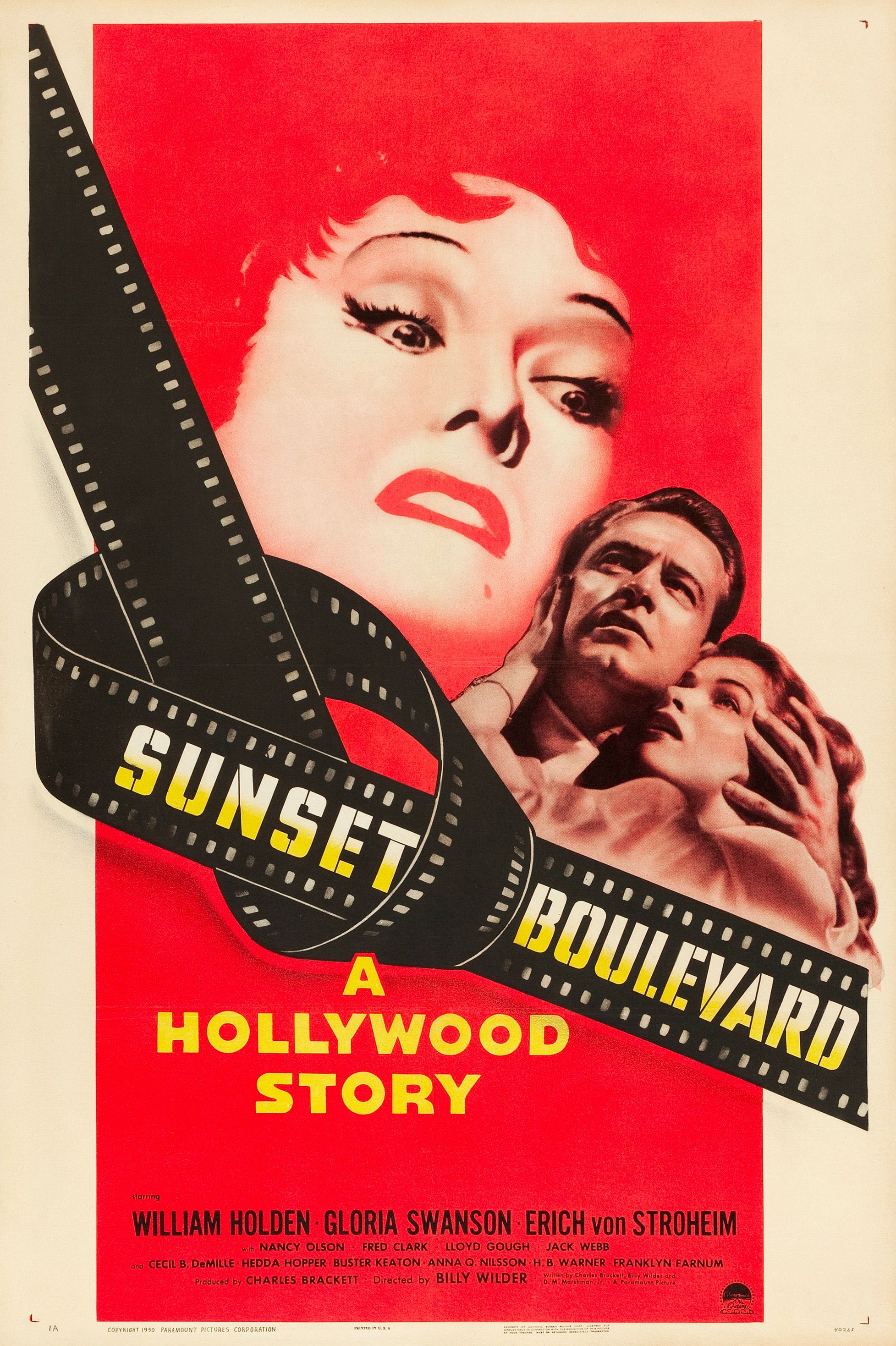
Sunset Boulevard
- Release Date
-
August 10, 1950
- Runtime
-
110 Minutes
-

William Holden
Joe Gillis
-

Gloria Swanson
Norma Desmond
Next: The 10 Best Billy Wilder and Charles Brackett Movies, Ranked

